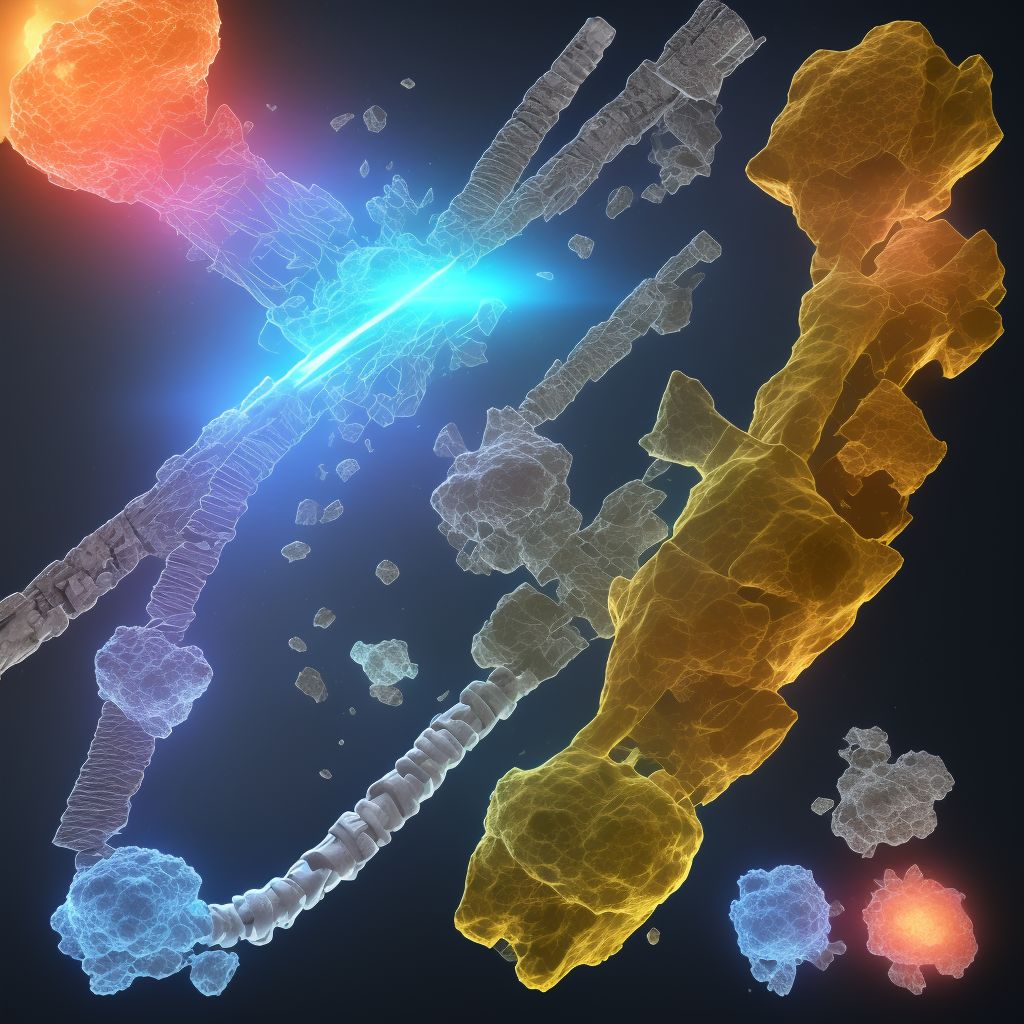
Displaced transverse fracture of shaft of unspecified tibia, subsequent encounter for open fracture type I or II with nonunion Save
ICD-10 code: S82.223M
Disease category: S82.223: Displaced transverse fracture of shaft of unspecified tibia
Displaced Transverse Fracture of Shaft of Unspecified Tibia: Understanding the Subsequent Encounter for Open Fracture Type I or II with Nonunion
A displaced transverse fracture of the shaft of an unspecified tibia is a significant injury that requires medical attention and subsequent care. In some cases, open fractures may occur, leading to complications like nonunion. This article will explore the basics of this condition, its subsequent encounter, and the importance of seeking appropriate medical expertise.
1. Definition: A displaced transverse fracture of the shaft of an unspecified tibia refers to a break in the thighbone below the knee, where the bone breaks horizontally across its width.
2. Open Fracture Type I or II: An open fracture, sometimes referred to as a compound fracture, occurs when the bone breaks through the skin. Type I or II open fractures involve minimal or moderate soft tissue damage, respectively.
3. Subsequent Encounter: A subsequent encounter indicates that the patient is receiving further medical attention for the same condition during the healing process. It may involve follow-up appointments, additional diagnostic tests, or ongoing monitoring of the injury.
4. Nonunion: Nonunion is a complication that can occur when the fractured bone fails to heal properly. In this case, the fracture remains unhealed for an extended period, leading to persistent pain and limited functionality.
- Symptoms: Common symptoms include pain, swelling, tenderness, difficulty walking or bearing weight, deformity, and limited range of motion.
- Diagnosis: A medical professional will perform a physical examination, review the patient's medical history, and order imaging tests such as X-rays or CT scans to confirm the diagnosis and assess the severity of the fracture.
- Treatment: While we won't discuss treatment in this article, it's crucial to note that seeking immediate medical attention is important to prevent complications and ensure proper healing.
Conclusion:
A displaced transverse fracture of the shaft of an unspecified tibia, subsequent encounter for open fracture type I or II with nonunion, requires proper medical care and attention. Recognizing the symptoms, obtaining an accurate diagnosis, and following the recommended treatment plan are essential for a successful recovery. If you experience any of the mentioned symptoms or suspect a fracture, consult a healthcare professional promptly to receive the appropriate care and guidance.
Treatment of Displaced transverse fracture of shaft of unspecified tibia, subsequent encounter for open fracture type I or II with nonunion:
Treatment Options for Displaced Transverse Fracture of Shaft of Unspecified Tibia, Subsequent Encounter for Open Fracture Type I or II with Nonunion
Displaced transverse fractures of the shaft of the unspecified tibia, subsequent encounter for open fracture type I or II with nonunion, can be complex injuries that require careful treatment planning. The goal of treatment is to promo...
To see full information about treatment please Sign up or Log in